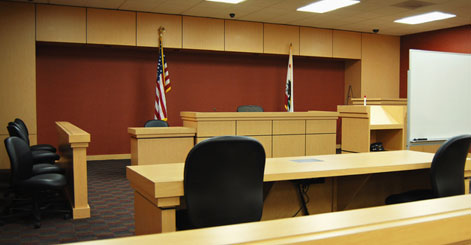Maximizing Your Opening Statement’s Impact
January 5, 2012 | Lawyer Viewpoint

Photo by: Nikolay Mamluke / Dreamstime.com
Although the debate is never-ending among lawyers over whether jurors make up their minds about a case after opening statements or only after closing arguments, one thing is certain: A powerful and persuasive opening statement goes a long way toward influencing jurors.
Giving particular attention to the juror-worthiness of your opening statement is therefore critical. Once you have determined the substantive issues you want to cover, presenting those issues to achieve maximum juror impact is key to your success.
Scientists tell us that after three days, we remember only 10 percent of what is verbally presented and 20 percent of what is visually presented. However, when a verbal presentation is combined with a visual presentation, we remember 65 percent of the presentation. These statistics bring home the importance of using demonstrative evidence and visual aids at trial.
Given the tremendous importance of the opening statement in juror persuasion, it is wise to incorporate visual aids at this early stage.
One of the most commonly used visual aids in opening statements is the timeline, a chart that summarizes the key events as they occurred over time. Most timelines are geared toward succinct presentation of information, appealing to the logical mind of the jurors.
These timelines consist of the relevant dates on a horizontal axis of the chart, with the information corresponding to each date given in condensed or "flagged" format above or below the horizontal line of dates.
As valuable as this type of timeline may be, it fails to take into account the emotional and subconscious minds of the jurors. For example, stop signs are in red, a color that subconsciously alerts us to danger or high risk. When a line is drawn diagonally through something, we understand that line to mean "don't," as in "don't smoke here." Yellow means caution and is used on signs to alert people to go cautiously or handle materials carefully.
These symbols, and many more, are immediately understood by our subconscious mind, and can be used to present information for maximum juror impact.
Symbolic language can be combined with the structural format of a timeline to yield targeted and persuasive presentation of information. For example, a symbol-rich timeline was used in a case in which a plaintiff's hand was severely injured by a malfunctioning machine manufactured by the defendant. Warnings that had been issued over the years that the machine was in need of a particular safety mechanism were not heeded.
The plaintiff's lawyer wanted to emphasize through a timeline the key elements of the defendants' failure to properly repair and maintain the machine. To accomplish this, the timeline was shown on a descending diagonal, symbolizing the steady downward course and inevitability of certain disaster if no countering force intervened.
The injury was set against a jagged red backdrop, jagged edges being symbolic of "breaking" and of pain and trauma. Red was used as a "danger" color. In addition, rather than just inserting a two-line summary of the content of each relevant document (warnings, service reports, etc.), photographs of the actual documents were inserted into the timeline, which subconsciously brought home the uncontestable existence of those documents (seeing is believing).
During the several hours that the plaintiff had to wait until his mangled hand could be extricated from the machinery, photographs were taken. Here too, instead of just noting the date and nature of the event as often happens in a more traditional timeline, the actual photograph of the plaintiff's mangled hand were inserted. The overall effect was compelling. The plaintiff's lawyer used the timeline throughout the trial, thus keeping his interpretation of the facts in front of the jurors.
A different example of how to appeal to jurors' emotional and subconscious mind with the use of a timeline is a case in which a lawyer wanted to show how his client's business had been increasingly successful until an event (the subject of the trial) occurred that resulted in the subsequent failure of the business.
The timeline was structured as a series of ascending steps, symbolizing the increasing success of the client. The client's impressive educational accomplishments were brought to life by photographs of newspaper articles touting his achievements and an icon of a diploma. His professional career, some of which took place on Capitol Hill, was symbolized by an icon of the Capitol building and photographs of legislation the client developed.
On the right side of the chart, the steps abruptly ended. The client's precipitous fall was symbolized by a "for sale" sign on his previously affluent business. This timeline brought home to the jurors the literal rise and catastrophic fall of the client.
Presenting an opening without visual aids means not taking advantage of all the persuasion techniques available to you. By not using visuals during the opening, you are putting yourself and your client at an immediate disadvantage. The point of every opening statement is to present your interpretation of the facts to the jury in a convincing manner. Using visual aids will increase your chances of doing just that.
About the author: Noelle C. Nelson, Ph.D., is a trial and business consultant who provides trial/jury strategy, witness preparation and focus groups for attorneys. She is the author of the booklet, "101 Winning Tips: How to Give a Good Deposition and Testify Well in Court." Her published books include "A Winning Case" (Prentice Hall), "Connecting With Your Client" (American Bar Association) and "The Power of Appreciation in Business" (MindLab Publishing). http://www.dr.noellenelson.com.

